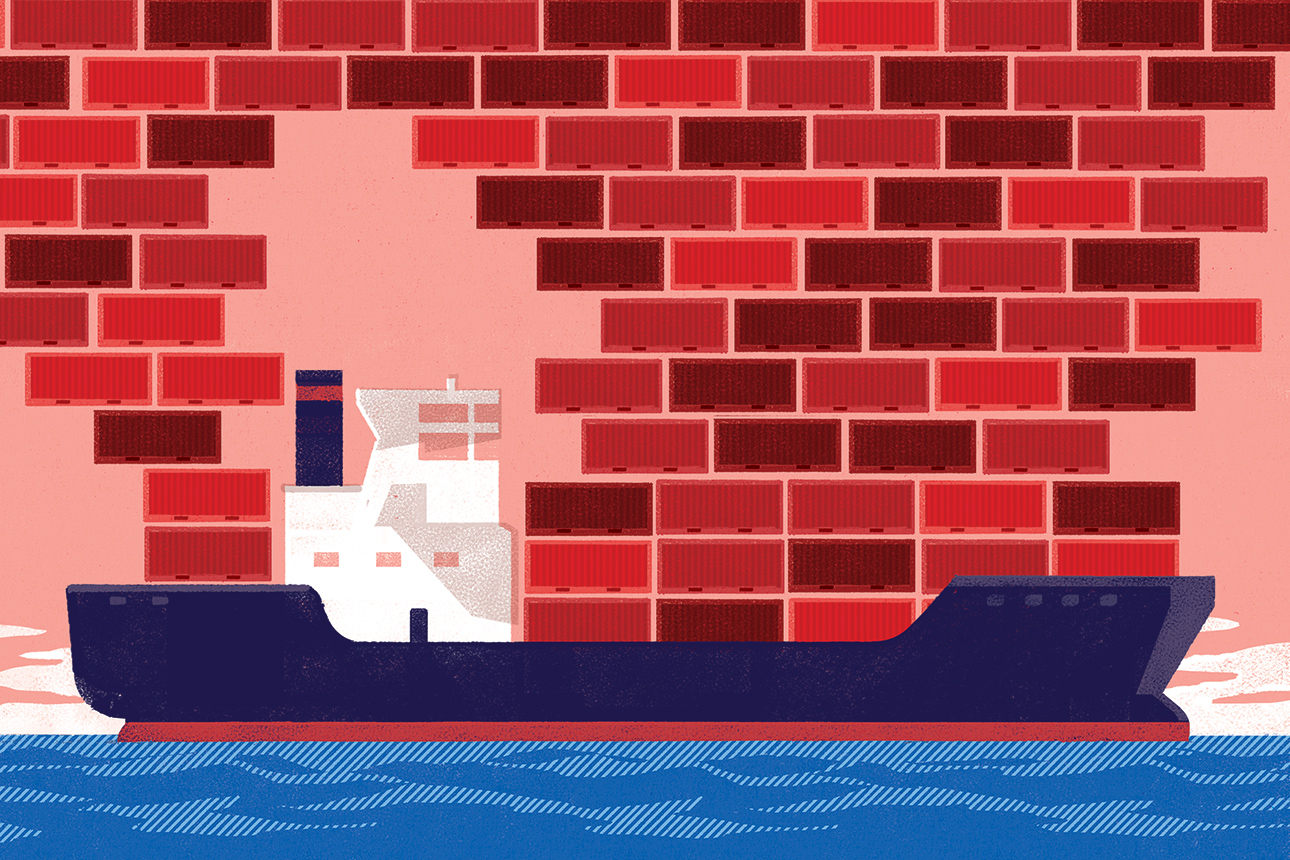What Everyone Gets Wrong About the Never-Ending COVID-19 Supply Chain Crisis
Spoiler alert: Just-in-time inventory management was never the problem.

Image courtesy of Chris Gash/theispot.com
The ongoing global supply chain crisis caused by the COVID-19 pandemic shows no sign of abating. Widespread product shortages are focusing attention on supply chain issues as never before — and while this publicity has shed some light on the problem, it has also spawned (misguided) calls to end the practice of just-in-time inventory management.
Multiple factors have led to the current situation, but they spring from two overarching causes: suppliers’ inability to adjust to soaring demand, and government interventions. In order to develop solutions to pandemic-induced product shortages, we need a better understanding of how these issues have played out since early 2020 and resulted in a worldwide logistics logjam.
The Pandemic Effect
As the pandemic took hold in March 2020, consumer demand patterns shifted abruptly. A shift to working from home, along with school closures, fueled increased demand for larger houses, home gadgets, computer and communications gear, furniture, toys, and recreational equipment. Such a dramatic shift would have strained manufacturing in the best of times. During the pandemic, manufacturers could not adjust in time to bridge gaps between supply and demand as they dealt with ongoing labor and material shortages, intermittent plant closures, and shipping delays.
Typically, short-lived supply crunches dissipate quickly as rising prices suppress demand and increased supply restores market equilibrium. But contrary to what standard economic theory about reaching supply-demand equilibrium suggests, prices have risen throughout the economy — in many cases substantially — while shortages have persisted.
Consider, for example, freight transportation. Early in the pandemic, transportation systems were strained by restrictions on air travel and quarantine requirements on vessel crews and interstate truck drivers. As Western countries swung back to higher levels of economic activity, ports could not process the increased shipping volumes. The entire transportation and distribution system was not built to add capacity at the rate the flow was growing, and labor shortages exacerbated the problem. The result was long delays, with ships anchored for weeks outside major ports — and a consequent shortage of maritime containers that were stuck on waiting vessels and could not be reloaded and shipped.
Shipping costs skyrocketed: The cost to ship a container from Asia to the United States’ East Coast climbed from around $1,400 per container to around $20,000.
References (10)
1. E. Kulisch, “Are You Shipping Me?!? $32,000 Container Move From China to LA,” American Shipper, July 30, 2021, www.freightwaves.com.
2. M. Wayland, “Chip Shortage Expected to Cost Auto Industry $110 Billion in Revenue in 2021,” CNBC, May 14, 2021, www.cnbc.com.





Comment (1)
Yaser Asgari